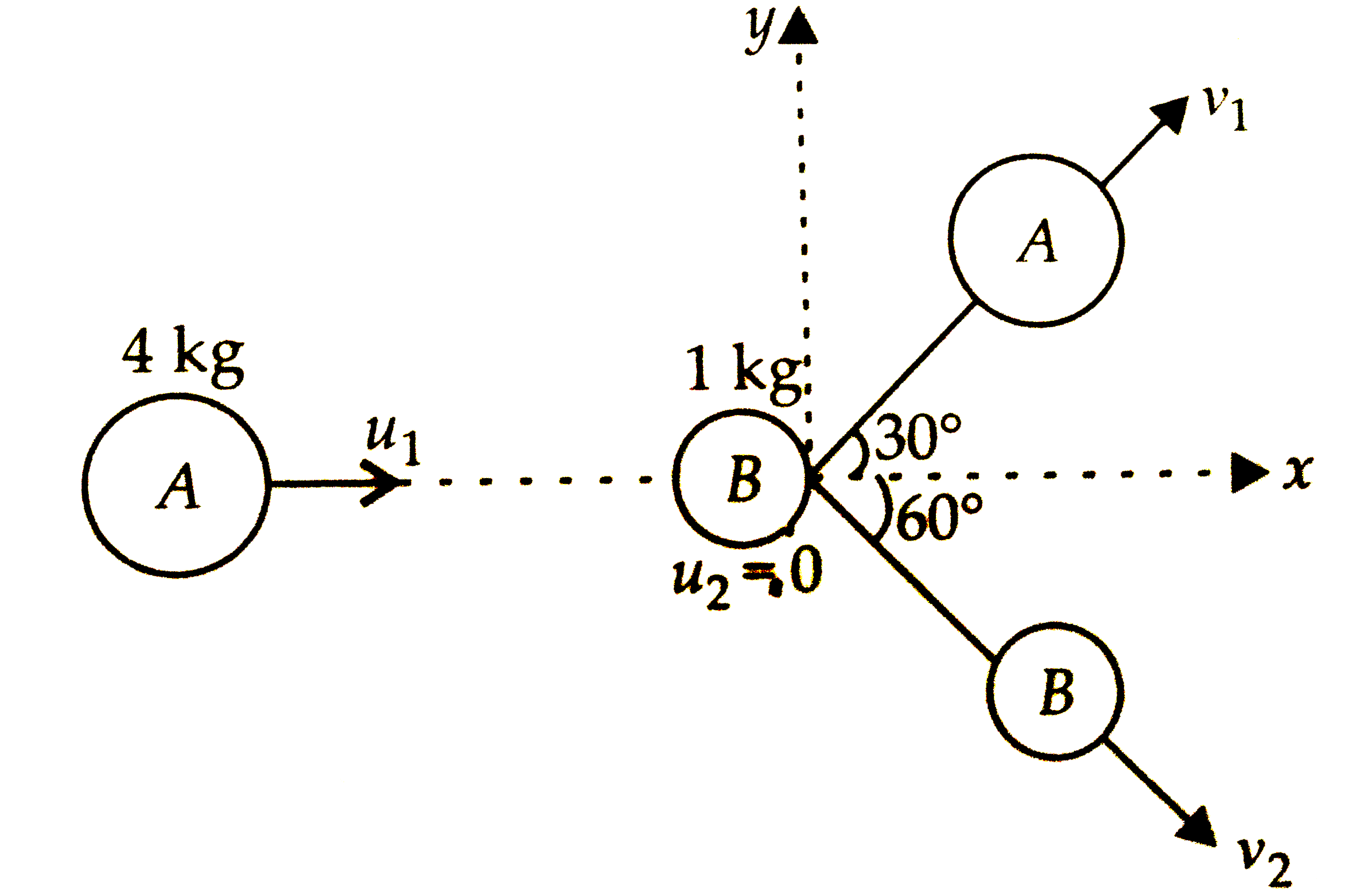A spherical ball A of mass 4 kg, moving along a straight line strikes another spherical ball B of mass 1 kg at rest. After the collision, A and B move with velocities respectively making angles of with respect to the original direction of motion of A. The ratio will be
The correct Answer is:A

Applying the law of conservation of linear momentum along a direction perpendicular to the direction of motion (i.e. along y-axis), we get
Topper's Solved these Questions
- WORK , ENERGY AND POWERBook:NCERT FINGERTIPSChapter:WORK , ENERGY AND POWERExercise:Higher Order Thinking Skills
Explore 8 Videos
- WORK , ENERGY AND POWERBook:NCERT FINGERTIPSChapter:WORK , ENERGY AND POWERExercise:NCERT Exemplar
Explore 18 Videos
- WORK , ENERGY AND POWERBook:NCERT FINGERTIPSChapter:WORK , ENERGY AND POWERExercise:Power
Explore 13 Videos
- WAVESBook:NCERT FINGERTIPSChapter:WAVESExercise:Assertion And Reason
Explore 15 Videos
Similar Questions
A ball of mass 100g moving at a speed of 12 m s−1 strikes another ball of mass 200 g at rest. After the collision both the balls move with a common velocity. Find the common velocity.
View SolutionA ball of mass 100g moving at a speed of 12 m s−1 strikes another ball of mass 200 g at rest. After the collision both the balls move with a common velocity. Find the common velocity.
View Solution
Knowledge Check
A spherical ball A of mass 4 kg, moving along a straight line strikes another spherical ball B of mass 1 kg at rest. After the collision, A and B move with velocities v1ms−1andv2ms−1 respectively making angles of 30∘and60∘ with respect to the original direction of motion of A. The ratio v1v2 will be
A√34B4√3C1√3D√3A body of mass 1kg is moving along a straight line with a velocity of 1m/s. The external force acting in the body is
A1NB1 dyneC1JDzeroA ball of mass 5 kg travelling with velocity of 15 cm/s makes a head on collision with another ball of mass 1 kg which is at rest. After the collision, the speed of the lighter ball is
Azero.Bless than 15 cm/s.Cequal to 15 cm/s.Dgreater than 15 cm/s.
A ball of mass m moving with velocity v collides head on elastically with another identical ball moving with velocity - V. After collision
View SolutionA smooth sphere of mass M moving with velocity u directly collides elastically with another sphere of mass m at rest. After collision their final velocities are V and v respectively. The value of v is
View SolutionA smooth sphere of mass M moving with velocity u directly collides elastically with another sphere of mass m at rest. After collision their final velocities are V and v respectively. The value of v is
View SolutionTwo masses m, and m, moving with velocities vaandvb in opposite direction collide elastically and after the collision maandmb move with velocities vbandva respectively. Then the ratio mamb is
View SolutionA ball of mass 1 kg moving with a velocity of 0.4 ms−1 collides with another stationary ball. After the collision, the first ball moves with a velocity of 0.3ms1 in a direction making an angle of 90∘ with its initial direction. The momentum of the second ball after the collision will be (in kg ms−1)
View Solution